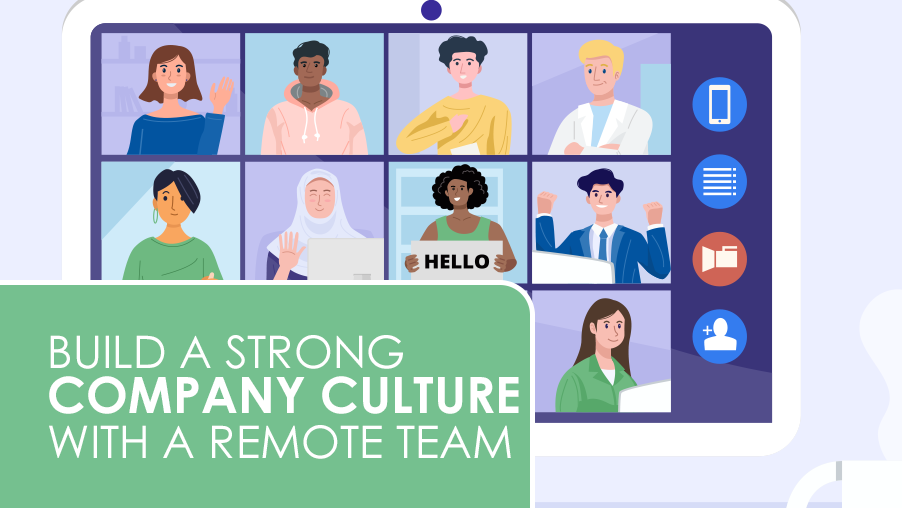Culture—whether good or bad—is the backbone of any company. It lives in team members’ day-to-day interactions, and influences how team members behave. But how do you create a strong company culture with a partially—or entirely—remote team?
I believe that remote workers can be as productive, engaged, creative, and collaborative as any in-office team. You can build a great culture with a remote staff. It requires a bit of planning, use of new technologies, and a lot of communication.
I’ve broken down the five key components of company culture so we can discuss how you can build each component with a remote team:
1. Communication
It’s easy for remote workers to feel isolated, so communication is key. I like using these four strategies:
Get your tech tools. At my company, Peak Support, we have Skype channels for each team, the whole company, and affinity groups like yogis and video game enthusiasts. We use these channels to communicate about work–and to check in, say good morning, and share emojis and gifs.
We also use carrot.io to share shout-outs to team members, birthday announcements, and company news.
Walk the virtual floor. I can’t walk a physical floor, but I can walk our virtual floor. I try to check in one-on-one with team members whenever I can. I say “hi” in the morning and let the team know whether I’ll be available, traveling, in meetings, or heads-down on a project. Other team leads and members of the senior leadership team do this as well.
Welcome feedback. We have an anonymous feedback form, and I almost always respond to this feedback–either by making a change or by explaining why I won’t. This helps ensure that I’m not just paying lip service to having a “virtual open door.”
Meet every new hire. I also lead our New Hire Orientation each week, to set expectations for new team members that they can talk to me at any time.
2. Community
A sense of community is the glue that brings a team together to work toward something bigger than themselves. You can do this in two ways:
Build a virtual community. Every week, we have an all-company Skype huddle. The huddle is usually done via chat and is an opportunity to introduce new team members, give shout-outs, and share company news. Sometimes it revolves around business topics, and other times we’ll build it around a non-work topic like holiday traditions.
Build in-person relationships. Meeting in person even once a year helps us build real relationships that can then be maintained remotely. We host regional meetups as well as our annual all-company Summit.
3. Narrative
History is a key part of culture. What challenges did you overcome to get where you are today? These challenges can become legends of the company that are passed on from veteran team members to new ones, and create a sense of kinship that no logos can create. How can you do this?
Tell your story. We frequently talk about how we started and how we got to where we are today–and it really helps.
4. Vision
A company vision can provide the direction toward which the whole team is headed. How can you be sure your vision isn’t just words on a piece of paper?
Make sure your vision is genuine. Your vision is meaningless if it’s not authentic.
Actively foster buy-in. Communicate your vision – and explain it. At my company, our vision is to be the first-choice partner to innovative companies seeking to scale. This may seem high-level, but we can talk in detail about each aspect of this vision–and we do, whenever we get a chance.
5. Values
While the vision defines where the company is going, values are the signposts that guide staff on how to get there. You should do that in two ways:
Communicate your values. Identify your company’s core values and make sure they are true guideposts for you and your team. Then let everyone know about them. We shout-out team members who exemplify our core values. We talk about them in annual reviews and in our New Hire Orientation. We use hashtags based on our core values–like #ClientFirst and #ContinuousImprovement–in chat conversations.
Live your values. Ultimately, values work only when leaders live and exhibit them.
Building a great company culture is hard, and it’s always a work in progress. We survey our team members each year to understand where we’re doing well, and where we still have work to do. But with a lot of intention and a lot of hard work, a company with a remote workforce can build a strong, positive culture that fosters teamwork, productivity, and innovation.
Psst! If you’re interested in leveling up your leadership skills, you can now download the training guide to our Emerging Leaders Program completely free of charge.
Illustration by Rhea Avanceña


